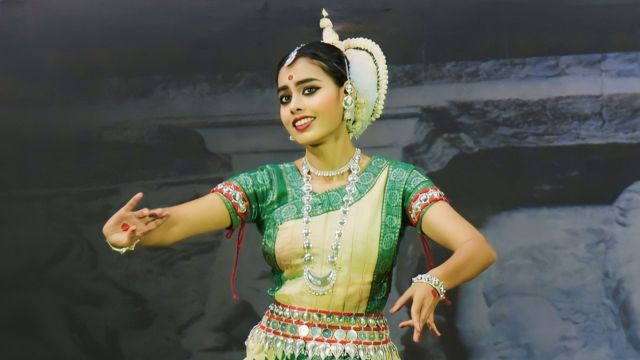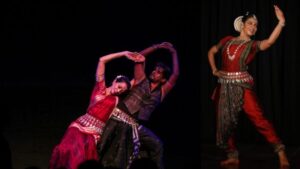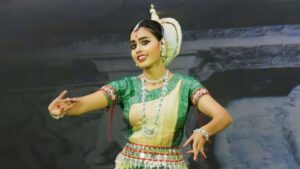In the world of Indian classical dance, Odissi stands out as a form of artistic expression that epitomizes grace, fluidity, and storytelling through intricate movements. At the heart of Odissi dance lies a unique and mesmerizing element: mudras, or hand gestures. These symbolic hand movements are not merely gestures but an elaborate language in themselves, conveying emotions, narratives, and cultural significance. In this 2000-word article, we will explore the profound significance of mudras in Odissi, their pivotal role in storytelling, and their cultural importance in the rich tapestry of Indian art.
The Genesis of Odissi Dance and Its Mudras
To appreciate the importance of mudras in Odissi, we must first delve into the history of this classical dance form. Odissi traces its origins back to the sacred temples of Odisha, where it was initially performed as a form of worship. As a visual medium to convey stories from Hindu mythology and religious texts, Odissi had to develop a language that transcended spoken or written words. Mudras emerged as the solution, creating a bridge between the mortal and the divine.
These mudras, initially seen as symbolic representations, gradually evolved into a rich vocabulary of movements. Each hand gesture in Odissi has a specific meaning, and their precise execution is fundamental to the dance. They provide a window into the dancer’s emotions, the narrative’s essence, and the cultural context within which the dance unfolds.
The Anatomy of Odissi Mudras
Odissi mudras are a complex system of hand gestures, each carrying unique meanings and emotions. These gestures are performed with precision, often with fingers and wrists adorned with intricate jewelry that accentuates their beauty and expression.
Single-Hand Mudras (Asamyuta Hasta)
In Odissi, there are twenty-four primary single-hand mudras. Each mudra is characterized by a particular arrangement of fingers, and their meanings vary widely. For instance:
- Pataka (Flag Mudra): The index finger is extended while the other fingers are joined. This mudra symbolizes a flag, denoting victory or an announcement.
- Tripataka (Three-Parts Mudra): In this mudra, the thumb, index finger, and middle finger are extended, symbolizing various elements like trees, mountains, and rivers.
- Kartarimukha (Scissors Mudra): Formed by joining the tips of the thumb and the index finger, this mudra resembles scissors and is often used to depict cutting actions.
- Hamsasya (Swan’s Beak Mudra): The thumb and the little finger are extended while the other fingers are folded, resembling a swan’s beak. It signifies the beak of a swan and is associated with beauty and grace.
Double-Hand Mudras (Samyuta Hasta)
In addition to single-hand mudras, Odissi incorporates double-hand mudras, which involve both hands. These gestures are often more intricate and expressive.
- Anjali (Salutation Mudra): This well-known gesture involves joining both palms together, fingers extended upwards. It symbolizes respect and greeting.
- Kataka (Bracelet Mudra): Formed by interlocking the fingers of both hands, this mudra signifies union, a bond, or an embrace.
- Kesha (Hair Mudra): In this mudra, the fingers of both hands intertwine to resemble hair. It is used to depict stories involving combing or arranging hair.
- Alapadma (Full Bloom Lotus Mudra): Both hands form a lotus shape with fingers extended. It signifies purity, beauty, and unfolding.
Facial Expressions (Abhinaya Mudra)
In addition to hand gestures, Odissi also places great importance on facial expressions, which complement the mudras. The dancer’s eyes, eyebrows, and facial muscles convey a wide range of emotions, from joy and sorrow to anger and devotion.
The Role of Mudras in Storytelling
Mudras are not mere static hand positions; they are dynamic tools for storytelling. When combined with intricate footwork, body movements, and facial expressions, they enable dancers to convey complex narratives without uttering a single word.
Depicting Characters
In Odissi, mudras are used to depict various characters from mythology and epics. For example, the depiction of Lord Krishna may involve the use of the “Mukula” mudra (bud-shaped hand gesture), while the character of a demon might utilize sharp, angular mudras to signify ferocity and malevolence.
Conveying Emotions
Mudras are essential in conveying a wide spectrum of emotions. A skilled Odissi dancer can seamlessly transition from depicting love and devotion with soft, flowing gestures to portraying anger and defiance with sharp, angular movements. The audience is not just witnessing a dance; they are experiencing the emotions of the characters.
Narrative Flow
Mudras also aid in the seamless progression of a story. They serve as a visual punctuation, guiding the audience through the narrative’s highs and lows. For instance, a slow and graceful movement may indicate a serene moment in the story, while rapid, dramatic mudras can signify a climactic event.
Rasa and Bhava
In Odissi, the concept of “rasa” (emotional essence) and “bhava” (emotional expression) is central to storytelling. Mudras play a crucial role in conveying these elements. The combination of specific mudras and facial expressions creates a profound emotional impact on the audience, allowing them to connect deeply with the performance.
Cultural Importance of Odissi Mudras
Beyond their role in dance performances, Odissi mudras hold significant cultural importance in the context of Odisha and Indian classical arts as a whole.
Preserving Tradition
Odissi is not merely a dance form; it is a repository of cultural heritage. The meticulous preservation of mudras ensures that this ancient art form remains authentic and continues to transmit stories, values, and traditions from generation to generation.
Spiritual and Devotional Significance
Many Odissi performances are rooted in spirituality and devotion. Mudras, with their intricate meanings and symbolism, help convey the spiritual essence of the narratives, strengthening the connection between the dancer, the audience, and the divine.
Cross-Cultural Influence
Odissi, like other Indian classical dance forms, has transcended national borders, captivating audiences worldwide. The universal language of mudras allows people from diverse backgrounds to appreciate and understand the art form, promoting cultural exchange and understanding.
Conclusion
In the realm of Odissi dance, mudras are more than just gestures; they are the essence of storytelling and the soul of cultural expression. Through their intricate and precise movements, Odissi dancers breathe life into characters, emotions, and narratives, connecting the audience to the rich tapestry of Indian mythology and culture. Mudras in Odissi dance are a testament to the enduring power of art to communicate, inspire, and transcend linguistic and cultural boundaries. They are the language of the hands that speaks to the heart and soul of those who witness their beauty and grace on the dance stage.
FAQ
1. What are mudras in Odissi dance?
Mudras are symbolic hand gestures used in Odissi dance to convey specific meanings, emotions, and actions. They play a crucial role in storytelling and expression within the dance.
2. How many types of mudras are there in Odissi dance?
In Odissi dance, mudras are broadly categorized into two types: Asamyuta Hastas (single-handed mudras) and Samyuta Hastas (double-handed mudras).
3. What is the significance of mudras in Odissi dance?
Mudras are essential in Odissi for expressing emotions, depicting characters, and narrating stories. They connect the dance to its cultural and spiritual roots, making it more than just a performance.
4. Can mudras be used outside of dance performances?
Yes, mudras have applications beyond dance, including in yoga, meditation, and religious rituals, where they are believed to influence energy flow and convey spiritual meanings.
5. What is the difference between Asamyuta Hastas and Samyuta Hastas?
Asamyuta Hastas are single-handed gestures, while Samyuta Hastas involve both hands working together to create a gesture. Each has distinct meanings and applications in Odissi dance.
6. How do mudras enhance the storytelling aspect of Odissi dance?
Mudras allow dancers to express complex emotions and actions without words. They help in depicting characters, narrating mythological stories, and conveying spiritual themes effectively.
7. Are there universal mudras common to all Indian classical dances?
While some mudras are common across various Indian classical dance forms, each dance style, including Odissi, has its unique interpretations and uses for these gestures.
8. What are some common single-handed mudras used in Odissi?
Common single-handed mudras include Pataka (flag), Tripataka (three parts of a flag), and Ardhapataka (half-flag). Each mudra has specific meanings and is used in various contexts.
9. What are some examples of double-handed mudras in Odissi?
Examples of double-handed mudras include Anjali (salutation), Kapota (dove), and Swastika (crossed hands). These gestures often symbolize respect, prayer, and auspiciousness.
10. How long does it take to learn mudras in Odissi dance?
Learning mudras requires consistent practice and can take several years to master, as it involves perfecting the precision, grace, and fluidity needed to perform them effectively.
11. Can beginners in Odissi dance learn mudras easily?
Beginners can start learning basic mudras relatively easily, but achieving the level of precision and expression required in Odissi dance takes time and dedicated practice.
12. How are mudras taught in Odissi dance classes?
Mudras are taught systematically in Odissi dance classes, starting with the basics and gradually introducing more complex gestures as the dancer progresses. Training includes the integration of mudras with body movements and facial expressions.
13. What role do facial expressions play alongside mudras in Odissi?
Facial expressions, or abhinaya, work in harmony with mudras to convey the full emotional and narrative depth of a performance. Together, they bring the stories and characters to life.
14. Are mudras used in Odissi dance unique to the style?
While some mudras may be similar to those in other Indian classical dances, Odissi has its distinctive style and interpretation, making its mudras unique in their execution and meaning.
15. How can I learn more about the different mudras in Odissi dance?
To learn more about Odissi mudras, you can take dance classes, watch instructional videos, read books on Odissi dance, or attend live performances to see the mudras in action.




